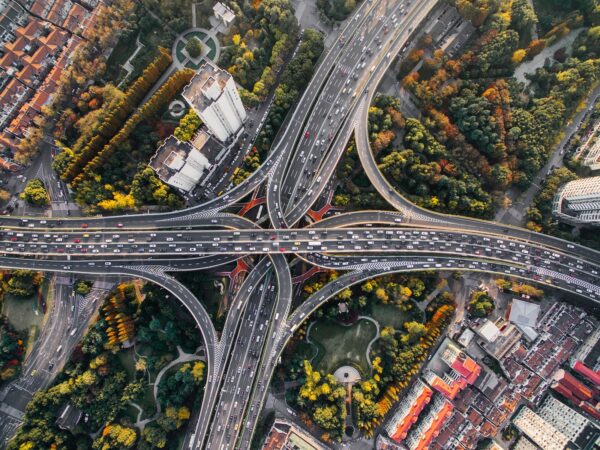Redmond, WA is a city located in King County, Washington, with a population of over 65,000 people. With its close proximity to Seattle, it’s no surprise that traffic can be a concern for those commuting to and from Redmond during rush hour. But just how bad is the traffic in Redmond compared to other similarly sized cities nearby, such as Bellevue and Kirkland?
While traffic can certainly be a headache for commuters in Redmond, it’s important to note that it’s not always as bad as one might expect. In fact, according to some sources, Redmond’s traffic is often not much worse than other big cities. However, as with any city, there are times when traffic can be particularly bad, such as when accidents occur or during major events.
So how does Redmond’s rush hour traffic compare to nearby cities like Bellevue and Kirkland? By examining traffic data and taking into account various factors such as population size, road infrastructure, and commuting patterns, we can gain a better understanding of how traffic in Redmond stacks up against its neighbors.
Rush Hour Traffic in Redmond, WA
Peak Hours
Rush hour traffic in Redmond, WA typically occurs between 7:00 AM and 9:00 AM in the morning and between 4:00 PM and 6:00 PM in the evening. During these peak hours, traffic congestion can be heavy, especially on major roads and highways.
Major Traffic Zones
The major traffic zones in Redmond, WA during rush hour include the downtown area, the Redmond Way corridor, the SR-520 freeway, and the NE 124th Street and Avondale Road intersection. These areas can experience heavy traffic congestion, particularly during peak hours.
Traffic Flow Patterns
Redmond, WA experiences a mix of traffic flow patterns during rush hour. Some areas have stop-and-go traffic due to traffic lights and heavy congestion, while other areas have more consistent traffic flow. Additionally, the flow of traffic can be affected by accidents or construction, which can cause delays and backups.
Compared to similarly sized cities nearby like Bellevue and Kirkland, Redmond’s rush hour traffic is generally considered to be on par with the rest of the region. While traffic congestion can be heavy during peak hours, it is not significantly worse than in other nearby cities.
Comparative Analysis with Bellevue, WA
When it comes to rush hour traffic in the Seattle metropolitan area, Redmond and Bellevue are two cities that often get compared. Both cities have a high concentration of tech companies and are located on the east side of Lake Washington. Here’s a closer look at how traffic in Redmond compares to Bellevue.
Peak Traffic Hours in Bellevue
According to the U.S. Census Bureau’s American Community Survey, the morning commute start times for Bellevue workers are spread out fairly evenly between 5:00 AM and 9:00 AM. However, the peak traffic hours in Bellevue tend to be between 7:00 AM and 8:00 AM, with the most commuters starting their morning commute at 7:30 AM.
Bellevue’s Major Traffic Zones
Bellevue has several major traffic zones that can cause congestion during rush hour. These include:
- Downtown Bellevue: The downtown area is home to many businesses and shopping centers, making it a popular destination during rush hour.
- Bellevue Way: This major roadway runs north-south through Bellevue and can become congested during peak traffic hours.
- Interstate 405: This highway runs through the eastern edge of Bellevue and can become backed up during rush hour.
Traffic Flow in Bellevue
Bellevue has a well-developed transportation system that includes several major highways, bus routes, and bike lanes. During rush hour, traffic flow in Bellevue can slow down considerably, but it generally keeps moving. The city has also invested in several transportation improvement projects in recent years, such as the expansion of the East Link light rail system and the implementation of adaptive traffic signals.
Overall, while traffic in Bellevue can be congested during rush hour, the city has a well-developed transportation system that generally keeps traffic moving.
Comparative Analysis with Kirkland, WA
Peak Traffic Hours in Kirkland
Kirkland, WA, is a city located in King County, east of Seattle. The peak traffic hours in Kirkland are from 7:00 AM to 9:00 AM and from 4:00 PM to 6:00 PM, similar to other cities in the area. During these hours, drivers can expect heavy traffic on major roads and highways, leading to longer commute times.
Kirkland’s Major Traffic Zones
Kirkland has several major traffic zones, including the I-405 corridor, which runs through the city and connects it to other cities in the region. This corridor experiences heavy traffic during peak hours, leading to congestion and delays. Other major traffic zones in Kirkland include downtown Kirkland, Totem Lake, and Juanita.
Traffic Flow in Kirkland
Traffic flow in Kirkland is generally slow during peak hours, with average speeds ranging from 10 to 20 miles per hour. The city has implemented several measures to improve traffic flow, including the installation of traffic signal synchronization systems and the addition of new lanes on major roads and highways. However, these measures have not completely eliminated traffic congestion in the city.
Overall, Kirkland’s traffic situation is similar to other similarly sized cities in the area, such as Bellevue and Redmond. While the city has implemented measures to improve traffic flow, drivers can still expect heavy traffic during peak hours, leading to longer commute times.
Key Differences and Similarities
Redmond vs Bellevue
Redmond and Bellevue are both cities located in King County, Washington. They are similar in size and have a similar population density. However, there are some key differences in their traffic patterns during rush hour.
During rush hour, Redmond experiences heavy traffic on its major roads, including State Route 520 and State Route 202. Bellevue, on the other hand, has more congestion on Interstate 405 and State Route 520. Both cities have similar travel times during off-peak hours.
Redmond vs Kirkland
Redmond and Kirkland are both located in King County and are similar in size. However, there are some differences in their traffic patterns during rush hour.
During rush hour, Redmond experiences heavy traffic on its major roads, including State Route 520 and State Route 202. Kirkland, on the other hand, has more congestion on Interstate 405 and State Route 520. Both cities have similar travel times during off-peak hours.
Bellevue vs Kirkland
Bellevue and Kirkland are both located in King County and are similar in size. However, there are some differences in their traffic patterns during rush hour.
During rush hour, Bellevue experiences heavy traffic on Interstate 405 and State Route 520. Kirkland, on the other hand, has more congestion on Interstate 405 and State Route 520. Both cities have similar travel times during off-peak hours.
Overall, while there are some differences in traffic patterns during rush hour between these cities, they are all relatively similar in terms of size and population density.
Conclusion
In conclusion, traffic in Redmond, WA can be a bit of a challenge during rush hour, especially with bottlenecks caused by the city’s geography. However, compared to other similarly sized cities like Bellevue and Kirkland, Redmond’s traffic is generally not any worse.
According to the data collected by GeoStat.org, the highest-traffic periods in Redmond are between 7:00 AM and 9:00 AM on weekdays. Commute times during these periods are longer than off-peak hours, but they are not significantly worse than other major cities.
Additionally, the pandemic has had a significant impact on traffic patterns in the United States, with many people working from home and avoiding commuting altogether. As a result, traffic congestion in Redmond and other cities has decreased in recent years.
Overall, while traffic in Redmond can be a bit frustrating during rush hour, it is not significantly worse than other similarly sized cities nearby. With proper planning and patience, commuters can navigate Redmond’s roads and arrive at their destinations on time.





0 Comments